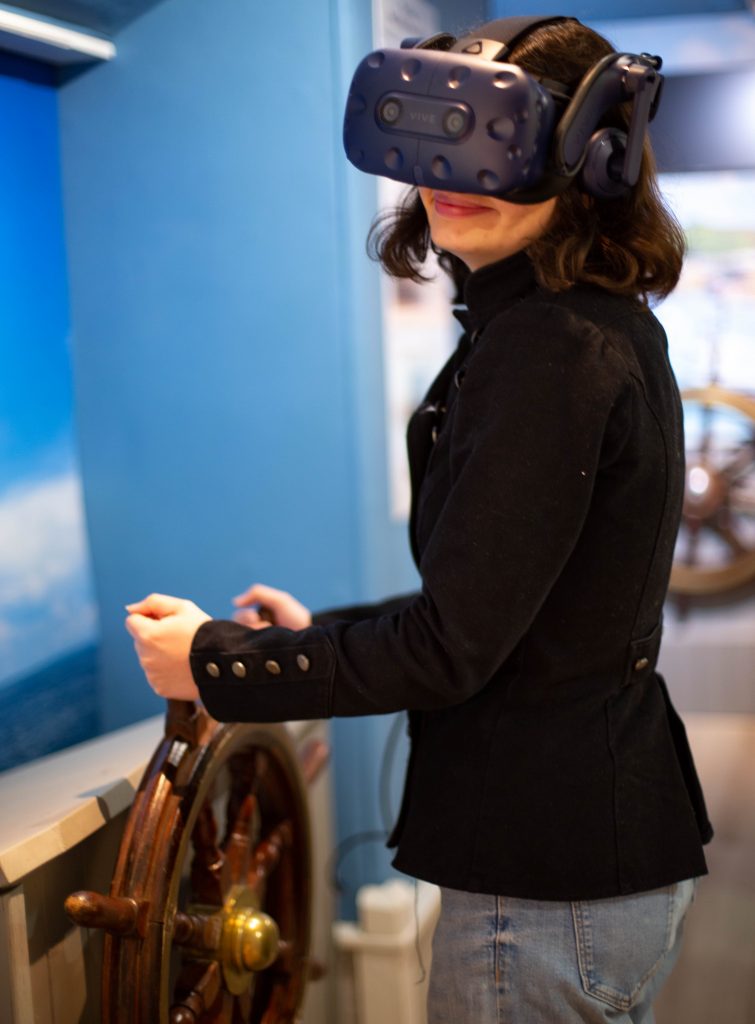Enjoy this article?
This area of Museums Journal is normally just for members. Join the MA to get full access to the latest thinking and trends from across the sector, case studies and best practice advice.


Museums have been talking about the potential of Virtual Reality (VR) for a long time but 2021 could be the year the technology finally goes mainstream.
Opening to the public this week, the Victoria and Albert Museum’s (V&A) summer blockbuster, Alice: Curiouser and Curiouser, offers a double immersive experience: a dizzying trip into a virtual wonderland within a physical exhibition that’s already heavy on the psychedelica. After months in lockdown, it is likely to be sensory overload for visitors (in a good way).
The Curious Alice experience is the first time the V&A has used VR in an exhibition. The museum worked with HTC Vive Arts and the immersive game studio Preloaded to produce an experience that sends the player down the book's famous rabbit hole and into a vividly realised world to take part in a game of hedgehog croquet. Gesture capture technology allows players to handle objects within the virtual world.
Further chapters of the game, which launched online last year, allow players to search for the white rabbit’s missing glove and solve nonsensical riddles set by the hookah-smoking caterpillar.
Based on a series of layered collages created for the exhibition by the Icelandic artist Kristjana Williams – herself inspired by the V&A’s collection of Victorian paper theatres – the game is a glimpse into the promise VR holds as both a tool for artistic creation and a medium for 360-degree storytelling.
This area of Museums Journal is normally just for members. Join the MA to get full access to the latest thinking and trends from across the sector, case studies and best practice advice.
The experience, which was mostly created from the team's bedrooms during lockdown, was a game-changing project to work on, says the V&A's head of digital media Kati Price. “The technology has moved on so much in just a few years,” she says. “It was genuinely such an exciting journey to go on.”
Lewis Carroll’s novel was the ideal subject matter for the V&A’s first foray into VR, says Price. “If you look back, ‘wonderland’ has always been used as a way of making sense of these big technological shifts and giving us an understanding of what they might mean for people.”
One of the most important aspects of the project is the way it hands agency to the visitor, placing them at the centre of the story. “We really wanted people to get a sense of what it’s like to be Alice and that sense of agency and empowerment she has,” says Price.
Adoption of the technology has undoubtedly been accelerated by the pandemic, with artists and institutions becoming more open to finding new ways for audiences to experience art and culture.
This is a “really important transformation”, says Rosalie Fabre of the HTC Vive Arts project team. “In the past year digital art has been used much more. There's much more reach now to experiment with these technologies. It's really inspiring to see the passion and readiness for experimentation.”
The reaction from visitors to the Curious Alice experience has been rewarding. “For some people it's been like going back into childhood and remembering what Alice meant to them,” says Fabre. “There's been a lot of emotion. It has touched a soft spot in audiences.”
It's not just larger institutions that are engaging with VR. Cornwall Museums Partnership has just launched an initiative, Reboot Cornwall, to highlight the range of cutting edge digital experiences that are available to visitors, with the aim of putting the county on the map as a destination for VR and other immersive technologies.

Among these projects is wAVE, a collaboration involving five museums in Bude, Looe, St Agnes, Porthcurno and the Isles of Scilly, which was conceived by Cornwall and the Isles of Scilly Local Enterprise Partnership.
The project was developed with researchers at Falmouth University over two years and aims to use immersive tech, including VR headsets, augmented reality and haptics, “in ways it has never been utilised before”.
Marketed to the public as Coastal Timetripping, the project enables visitors to explore virtual heritage sites, see artefacts in their original settings and meet historical characters, as well as supporting local businesses by offering recommendations on the best places to stay, dine and hang out in each location.
The wAVE partnership also gave rise to the Museums Immersive Network, a national network that launched in the middle of lockdown last year to share best practice and new innovations in the field.
With many more VR and immersive tech projects about to come to fruition, there's no doubt that the technology is here to stay in museums. As the boundaries between physical and virtual worlds become increasingly blurred, white rabbits everywhere might soon be out of a job.
This area of Museums Journal is normally just for members. Join the MA to get full access to the latest thinking and trends from across the sector, case studies and best practice advice.